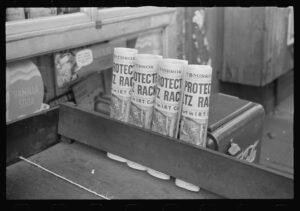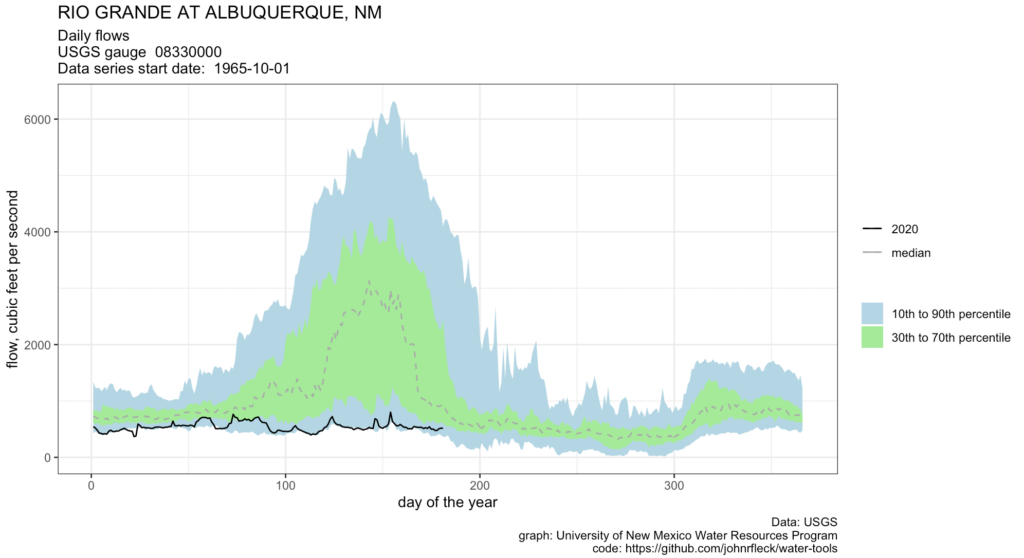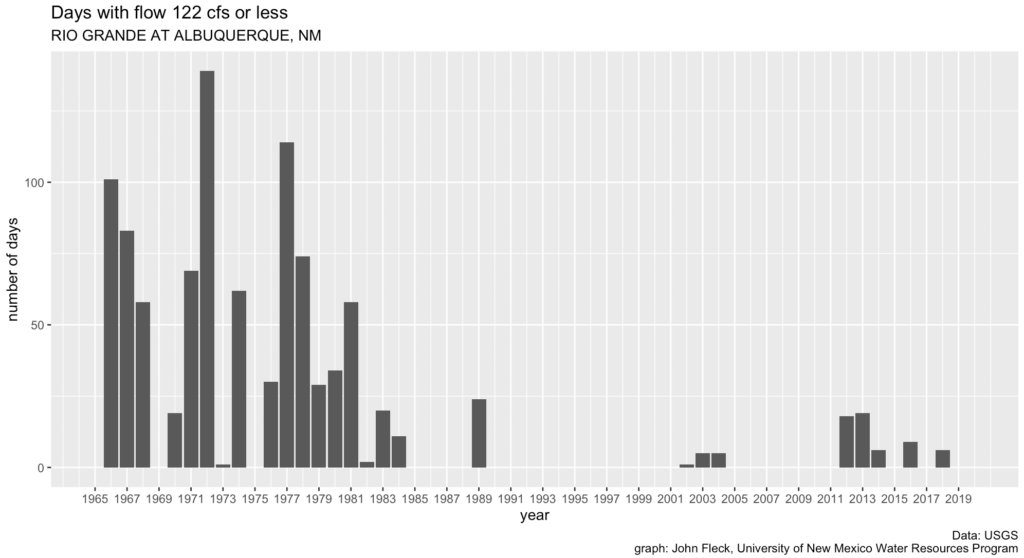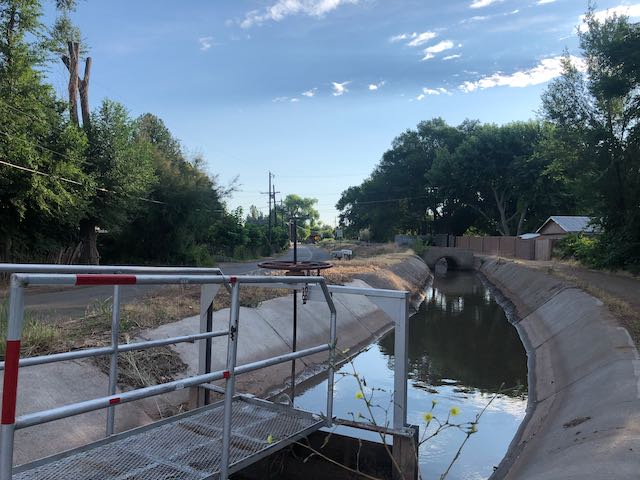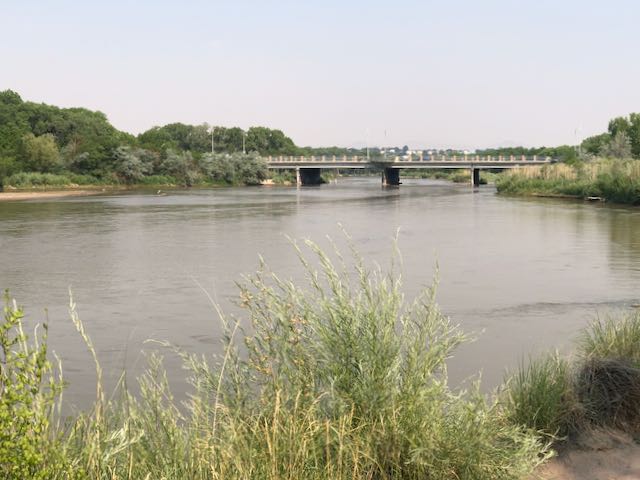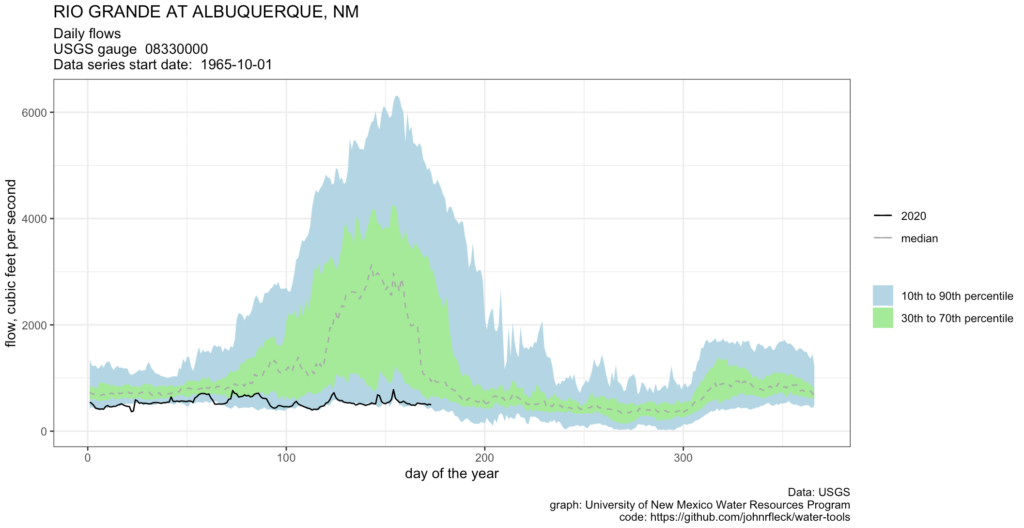By Eric Kuhn

Location of Lower Colorado River Basin community of St. George, Utah
As Utah pushes forward with its proposed Lake Powell Pipeline – an attempt move over 80,000 acre feet per year of its Upper Colorado River Basin allocation to communities in the Lower Basin – it is worth revisiting one of the critical legal milestones in the evolution of what we have come to call “the Law of the River.”
The division of the great river’s watershed into an “Upper Basin” and “Lower Basin”, with separate water allocations to each, was the masterstroke that allowed the successful completion of the Colorado River Compact in 1922. But the details of how that separation plays out in water management today were not solidified until a little-discussed U.S. Supreme Court ruling in 1955, in the early years of the decade-long legal struggle known as “Arizona v. California.”
Most, if not all, of the small army of lawyers, engineers, water managers, board members, academics, tribal officials, NGO representatives, and journalists now actively engaged in Colorado River issues are familiar with the 1963 Arizona v. California Supreme Court decision. It was Arizona’s great legal victory over California that cleared the road for the Congressional authorization and construction of the Central Arizona Project (CAP). Many in the ranks are also quite familiar with Simon H. Rifkind, the court-appointed Special Master who conducted lengthy hearings and worked his way through a mountain of case briefs and exhibits before writing his 1960 master’s report that set the stage for the court’s decision. Few of us, however, are familiar with George I. Haight. Haight was the first special master in the case, appointed on June 1st, 1954. He died unexpectedly in late July 1955. Two weeks before his death he made a critical decision that was upheld by the Supreme Court and set the basic direction of the case. Today, as the basin grapples with climate change, shortages, declining reservoir levels, and most recently, Utah’s quest to build the Lake Powell Pipeline exporting a portion of its Upper Basin water to the Lower Basin to meet future needs in the St. George area, Haight’s forgotten opinion looms large.
In late 1952 when Arizona filed the case, it was about disputed issues over the interpretation of both the Colorado River Compact and the Boulder Canyon Project Act. Among its claims for relief, Arizona asked the court to find that it was entitled to 3.8 million acre-feet under Articles III(a) & (b) of the compact (less a small amount for Lower Basin uses by New Mexico in the Gila River and Utah in the Virgin River drainages), that under the Boulder Canyon Project Act California was strictly limited to 4.4 million acre-feet per year, that its “stream depletion” theory of measuring compact apportionments be approved, and that evaporation off Lake Mead be assigned to each Lower Division state in proportion to their benefits from Lake Mead. California, of course, vigorously opposed Arizona’s claims. One of California’s first moves was to file a motion with Haight to bring into the case as “indispensable” parties the Upper Division states; Colorado, New Mexico, Utah, and Wyoming. California’s logic was that the compact issues raised by Arizona impacted both basins and every basin state (history has shown California was right on).
The Upper Division states were desperately opposed to participating in the case. Backing the clock up to the early 1950s, these states, including Arizona, had successfully negotiated, ratified, and obtained Congressional approval for the Upper Colorado River Basin Compact. They were now actively seeking Congressional legislation for the Colorado River Storage Project Act (CRSPA), the federal law that would authorize Glen Canyon Dam (Lake Powell) and numerous other Upper Basin projects. Upper Basin officials feared that if they became actively involved in Arizona v. California, California’s powerful Congressional delegation would use it as an excuse to delay approval of CRSPA (as it had successfully done with the CAP). Thus, these states and their close ally, Arizona, opposed California’s motion.
The basis of their opposition was relatively simple; Under the compact, except for the Upper Basin’s obligations at Lee Ferry, the basins were separate hydrologic entities, the issues raised by Arizona were solely Lower Basin matters, and that Arizona was asking for nothing from the Upper Division states. Their strategy worked. In a July 11, 1955 opinion, Haight recommended California’s motion be denied. By a 5-3 decision, the Supreme Court upheld his recommendation and, except for Utah and New Mexico as to their Lower Basin interests only, the Upper Division states were out of the case. The Upper Division states cheered the decision. Arizona’s crafty Mark Wilmer devised a new litigation strategy built on Haight’s logic and ultimately Haight’s successor, Simon Rifkind, ruled that there was no need to decide any issue related to the compact. For more details, see Science Be Dammed, Chapter 15.
In convincing Special Master Haight to deny California’s motion, Arizona and the Upper Division states turned him into an ardent fan of the Colorado River Compact. Haight opined “The compact followed years of controversy between the states involved. It was an act seemingly based on thorough knowledge by the negotiators. It must have been difficult of accomplishment. It was the product of real statesmanship.” In justifying his decision, he found “The Colorado River Compact evidences far seeing practical statesmanship. The division of the Colorado River System waters into Upper and Lower Basins was, and is, one of its most important features. It left to each Basin the solution to that Basin’s problems and did not tie to either Basin the intra-basin problems of the other.” A few pages later, he says “The Compact, by its terms, provides two separate groups in the Colorado River Basin. Each of these is independent in its sphere. The members of each group make the determinations respecting that group’s problems,” and finally “because by Article III of the Colorado River Compact there was apportioned to each basin a given amount of water, and it is impossible for the Upper Basin States to have any interest in water allocated to the Lower Basin States.”
Fifty five years later, how would Special Master Haight view the problems the Colorado River Basin is facing where climate change is impacting the water available to both basins, through the coordinated operation of Lakes Mead and Powell the basin’s drought contingency plans are interconnected, critical environmental resources in the Grand Canyon, located in the Lower Basin, are impacted by the Upper Basin’s Glen Canyon Dam, and most recently two states, New Mexico and Utah, have found it desirable to use a portion of each’s Upper Basin water in the Lower Basin? With one major exception, I think he would be pleased. Haight understood that through Article VI, the compact parties had a path to resolve their disputes and implement creative solutions. The first part of Article VI sets forth a formal approach where each state governor appoints a commissioner, the commissioners meet and negotiate a solution to the issue at hand and then take the solution back to their states for legislative ratification. This formal process has never been used, but luckily, Article VI also provides an alternative. The last sentence states “nothing herein contained shall prevent the adjustment of any such claim or controversy by any present method or by direct future legislative action of the interested states.” After Arizona refused to ratify the compact in the 1920s Colorado’s Delph Carpenter successfully used federal legislation to implement a six-state ratification strategy (the Boulder Canyon Project Act).
The exception that would concern Haight is Utah’s unilateral decision to transfer about 80,000 acre-feet of its Upper Basin water to the Lower Basin via the Lake Powell Pipeline. The LPP violates the basic rationale that Haight used to keep the Upper Basin out of Arizona v. California and for which Utah and its sister Upper Division states fought so hard. The project uses water apportioned for exclusive use in the Upper Basin, terms carefully defined by the compact negotiators, to solve a water supply problem in the Lower Basin.
Defenders of Utah’s may believe a precedent has already been set– the Navajo-Gallup Pipeline, which delivers 7,500 acre-feet of New Mexico’s Upper Basin water to the community of Gallup and areas of the eastern Navajo Nation. But if that is to be cited as a precedent, it comes with an important caveat. New Mexico addressed the compact issues through federal legislation with the participation and consent of the other basin states and stakeholders. Utah, by comparison, apparently believes federal legislation, and by implication the consent of others in the basin, is not needed.
In the face of climate change induced declining river flows and increased competition for the river’s water, there is no question that the basic compact ground rules devised by the negotiators a century ago will face increasing pressure. There will likely be more future projects and decisions that, like the LPP, will challenge the strict language of the compact. The question now facing the basin is how will this revisiting be accomplished? Will it be done in an open and transparent manner that engages not just the states, but a broad range of stakeholders and implemented through legislation (not easy in today’s world, as a practical matter it requires no opposition from any major party to get through the Senate) or by a series of unilateral decisions designed to benefit or advantage individual states or specific entities, but with no input or buy-in from the basin as a whole?

